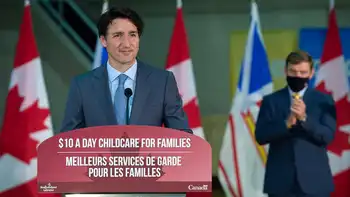Austin Energy to double output of alternative energy
By The Daily Texan
Substation Relay Protection Training
Our customized live online or in‑person group training can be delivered to your staff at your location.

- Live Online
- 12 hours Instructor-led
- Group Training Available
State legislators called for the Texas Public Utilities Commission to spend $4.93 billion to move 18,456 megawatts of wind energy to Texas cities on July 17. Legislators asked the commission to devise a plan for how to move power generated through alternative sources of energy throughout the state in July 2005.
Austin currently receives 6 percent of its energy from wind, but the city will increase that amount to 11 percent by the end of 2008, said Austin Energy spokesman Ed Clark.
The Texas Legislature began allocating funds in 2005 for an increase in a non-specific renewable energy, said commission spokesman Terry Hadley. The bill outlining the plan requires the utilities commission to provide a minimum of 10,000 megawatts of renewable energy to Texas cities by 2025.
The bill also calls for 500 megawatts from a renewable energy source other than wind energy, which the commission plans to acquire from landfill gases.
The plan, though already approved, is currently theoretically contingent on the commission's establishment of means through which wind farms can transfer energy to Texas cities.
"Starting next year, the application process will begin for contractors to start establishing concrete power lines," Hadley said.
Green energy is already provided to Austin residents in contracts given by Austin Energy with a fixed kilowatt-per-hour rate, and residents can subscribe to GreenChoice, an Austin Energy program, to use only green energy. GreenChoice users pay $18.50 more per month for every 1,000 kilowatt hours than those who do not subscribe.
The contract for green energy expires Dec. 31, 2022, according to the Austin Energy Web site. However, Austin residents may see the cost of green energy contracts made with the city increase after their expiration because of the projected increase in the availability of wind energy, Clark said.
Austin, which uses 2,300 megawatts of power on a hot day, will use power lines already connected to the wind turbines in West Texas to contract 437 megawatts of power from 300 turbines by December.
Unlike traditional gas or coal power plants, wind turbines rely on windy weather conditions and do not constantly produce power.
The wind turbines in West Texas currently generate 1.5 megawatts of power, which can produce 3.9 million kilowatts per hour. A basic 1.5-megawatt power plant, on the other hand, generates three and a half times more power, Clark said.
The commission exceeded the minimum requirements of the energy amount in the 2005 plan because there is a greater demand for renewable energy as Texas cities grow and more houses are built.
"In the last 10 years, every indicator reveals that the minimum legislative requirements have been exceeded," Hadley said.
UT mechancial engineering professor Ronald Matthews said Texas could be powered exclusively from wind energy.
"You could power the whole state on wind power," Matthews said. "Texas is a really green state."











